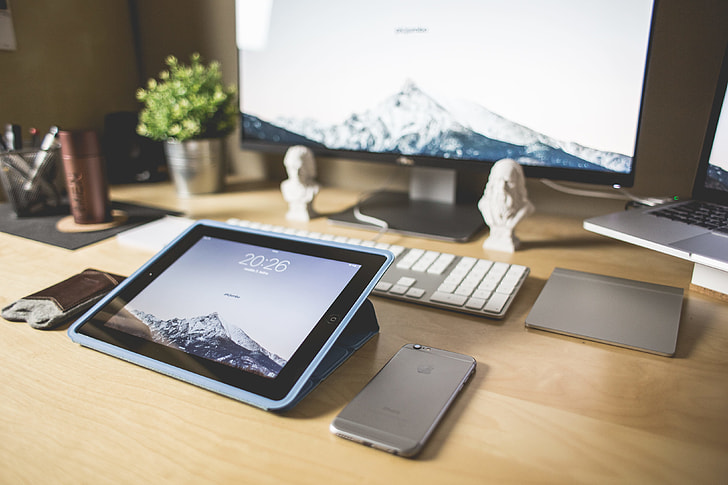Office tables play a crucial role in any workplace in the work environment, providing functional surfaces for meetings, collaboration, and daily activities. Whether used for personal workspaces, meeting rooms, or communal settings, the right office table can enhance productivity, organization, and the overall office environment.
Work tables are adaptable and straightforward, frequently utilized in open office layouts where flexibility is crucial. In contrast to standard desks, these tables feature a wide, unobstructed surface without built-in storage. This design makes them perfect for teamwork and temporary work setups. They can also be reconfigured easily, which permits teams to change their workspace desks arrangement as required.
Boardroom tables are a central feature in meeting rooms and are designed to accommodate multiple people. They are available in different shapes and sizes, including rectangular, oval, and round, depending on the number of attendees and the room's layout. Contemporary conference tables typically come equipped with built-in power outlets, USB connections, and cable management features to accommodate technological needs in meetings.
In breakrooms and cafeterias, tables provide employees with a space to relax and socialize. These tables tend to have a more laid-back design, able to support different seating setups. When choosing breakroom tables, durability and easy maintenance are crucial factors, especially in areas with heavy foot traffic.
Seminar tables are frequently found in seminar or classroom environments. They are typically lightweight and often designed to be foldable, which allows for easy transportation and storage when not needed. They allow for plenty of room for laptops, notebooks, and other supplies, while providing adaptability for various seating arrangements.
 When picking office tables, it's essential to take both design and functionality into account. Tables should complement the office aesthetic while offering practicality. The materials selectedwood, metal, or glassnot only influence the table's look but also its durability and upkeep. Adjustable-height tables are becoming more popular as they offer flexibility for both seated and standing work.
When picking office tables, it's essential to take both design and functionality into account. Tables should complement the office aesthetic while offering practicality. The materials selectedwood, metal, or glassnot only influence the table's look but also its durability and upkeep. Adjustable-height tables are becoming more popular as they offer flexibility for both seated and standing work.
Tables are vital parts of an effective workplace. Regardless of whether they are for meetings, teamwork, or breaks, the appropriate table can enhance the office layout, boost productivity, and foster a more functional and welcoming work environment.
Work tables are adaptable and straightforward, frequently utilized in open office layouts where flexibility is crucial. In contrast to standard desks, these tables feature a wide, unobstructed surface without built-in storage. This design makes them perfect for teamwork and temporary work setups. They can also be reconfigured easily, which permits teams to change their workspace desks arrangement as required.
Boardroom tables are a central feature in meeting rooms and are designed to accommodate multiple people. They are available in different shapes and sizes, including rectangular, oval, and round, depending on the number of attendees and the room's layout. Contemporary conference tables typically come equipped with built-in power outlets, USB connections, and cable management features to accommodate technological needs in meetings.
In breakrooms and cafeterias, tables provide employees with a space to relax and socialize. These tables tend to have a more laid-back design, able to support different seating setups. When choosing breakroom tables, durability and easy maintenance are crucial factors, especially in areas with heavy foot traffic.
Seminar tables are frequently found in seminar or classroom environments. They are typically lightweight and often designed to be foldable, which allows for easy transportation and storage when not needed. They allow for plenty of room for laptops, notebooks, and other supplies, while providing adaptability for various seating arrangements.
 When picking office tables, it's essential to take both design and functionality into account. Tables should complement the office aesthetic while offering practicality. The materials selectedwood, metal, or glassnot only influence the table's look but also its durability and upkeep. Adjustable-height tables are becoming more popular as they offer flexibility for both seated and standing work.
When picking office tables, it's essential to take both design and functionality into account. Tables should complement the office aesthetic while offering practicality. The materials selectedwood, metal, or glassnot only influence the table's look but also its durability and upkeep. Adjustable-height tables are becoming more popular as they offer flexibility for both seated and standing work.Tables are vital parts of an effective workplace. Regardless of whether they are for meetings, teamwork, or breaks, the appropriate table can enhance the office layout, boost productivity, and foster a more functional and welcoming work environment.